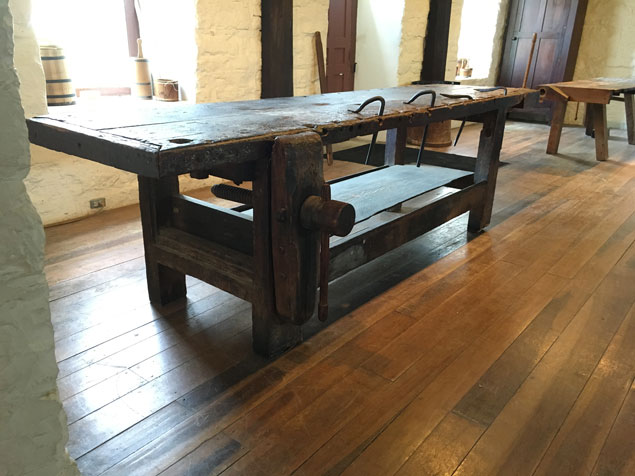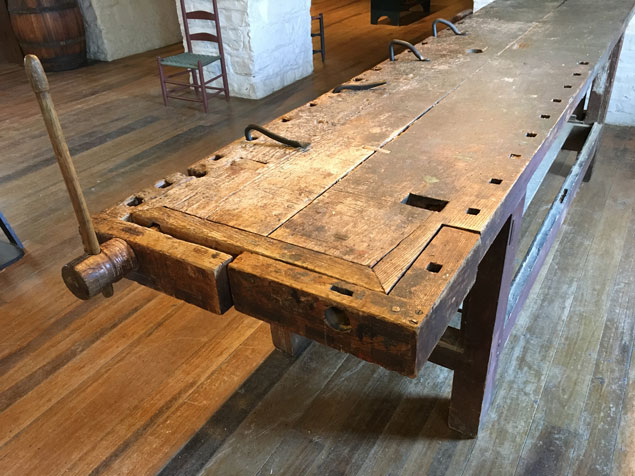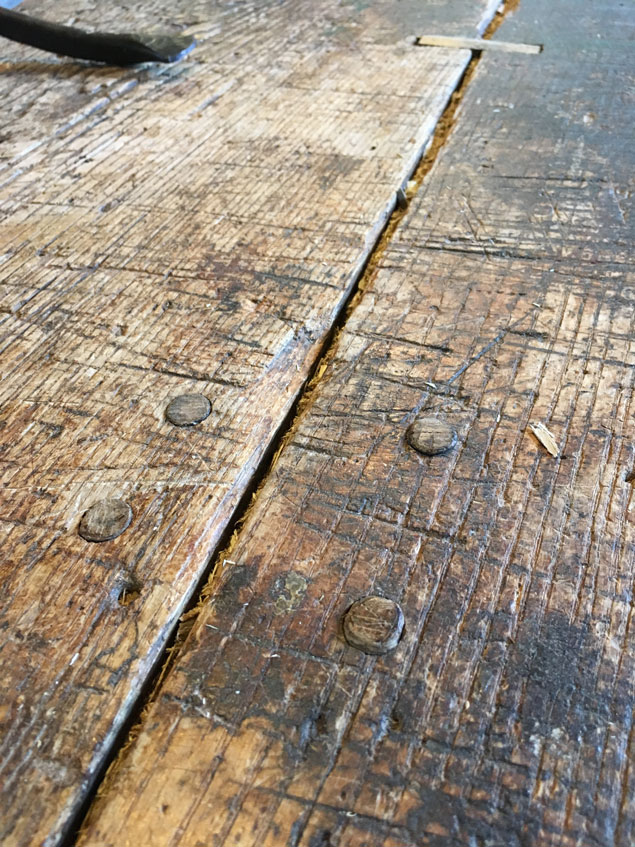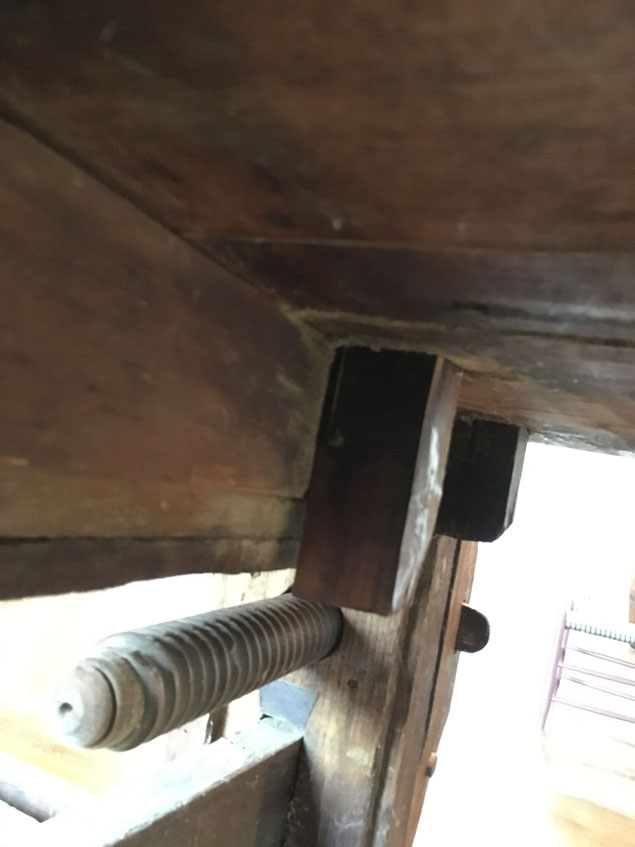We may receive a commission when you use our affiliate links. However, this does not impact our recommendations.
When most people discuss Shaker workbenches, they conjure up images of massive cabinets with drawers and doors that are topped by a workbench top – plus a tail vise, leg vise and probably a sliding deadman.
This form of workbench shows up in many of the East Coast Shaker communities, but in the Western communities, I have yet to see a bench exactly like this. At the Whitewater Shaker village outside Cincinnati, there’s an unrestored Shaker workbench in the cellar that has more in common with French benches than anything else.
This weekend I spent an hour studying two Shaker workbenches at the Pleasant Hill community. The first one discussed here was likely built similarly to an East Coast Shaker workbench. The second bench, which I’ll discuss tomorrow, is quite different and exciting.
This first long bench – about 9’ long overall – was obviously built by a skilled hand and looks at first glance as if it were designed for two woodworkers. There are two planing stops, two tail vises but (oddly) only one leg vise.
The top consists of two planks that are joined in the middle with a spline that is further secured with wooden pegs. There are two rows of dog holes on the benchtop – one at the front edge and one at the back edge. Both tail-vise mechanisms, however, are at the same end of the bench, which suggests that it was designed for one woodworker and not two. (I doubt this second vise was designed for a left-handed Shaker as there is no face-vise mechanism for the rear part of the bench.)
Also unusual is there are more dog holes in the front row than in the back. The back row of dog holes show hardly any use. The front row is plum near worn out in places.
The other evidence that this wasn’t a two-person workbench is the understructure of the bench. Currently the bench has a weird live-edge shelf resting on the stretchers. But the stretchers and legs are all rabbeted as if they held panels to enclose the workbench base. The rear stretcher and legs are similarly rabbeted, but the front stretcher is not. Instead, the front stretcher has evidence of a sliding deadman.
My hypothesis as to what is going on here is that this bench was built for one woodworker. It had two tail vises to help the woodworker hold long and wide panels, but that the mechanism was rarely used. (Pleasant Hill has many towering case pieces that could have made the bench builder think that the second tail vise would be handy.)
The base of the bench was almost certainly enclosed at some point, though I can’t say if there were drawers and doors below. Some benches just had a giant cavern for tool storage below the benchtop.
But it is a sweet bench.
— Christopher Schwarz
Like workbench talk? Check out the new fully revised edition of “Workbenches: From Design & Theory to Construction & Use.”
Here are some supplies and tools we find essential in our everyday work around the shop. We may receive a commission from sales referred by our links; however, we have carefully selected these products for their usefulness and quality.










![How to Build a Modern Kitchen Island [Video]](https://dev.popularwoodworking.com/wp-content/uploads/bfi_thumb/dummy-transparent-olcy6s63it1p9yp7uhusjas7c8kahafrhg9su7q9i0.png)


I notice holdfasts with round shanks in square holes. Is this just for display or will this actually work?
The family and I were just there 3 days ago!! My son and I spent several minutes looking at these benches. My son is only 9 and he hypothesized immediately the two tailvises were for a left handed son ( like himself) could leard next to Dad. Certainly the shakers would not have done this,but he is a thinker! Indeed there are many worthwhile furniture pieces there to examine. The wifes new list of projects are all shaker inspired!
I think he’s just asking about the wood grain which is clearly different between the two planks. You can tell that they weren’t tooled in because the plugs don’t exhibit the same marks.
Chris,
What are your thoughts on the regular “kerf-looking” marks parallel to the long edge?
Damien